Imagine it’s 1984. The world of personal computing is dominated by text-heavy interfaces and command-line prompts, accessible only to the tech-savvy. Then, on a bright January morning, a new player enters the arena, changing the course of personal computing forever. This is the story of the Macintosh, Apple’s brainchild, which transformed a geek’s gadget into a household staple. With its graphical user interface, compact design, and user-friendly approach, the Macintosh didn’t just sell a machine; it sold an experience that reshaped public perception of what a personal computer could be.
In this article:
- The Dawn of Macintosh
- Technical Innovations and Features
- Impact on Personal Computing
- Statistical Overview and Milestones
- Challenges and Criticisms
- Legacy and Evolution
- Conclusion
- References
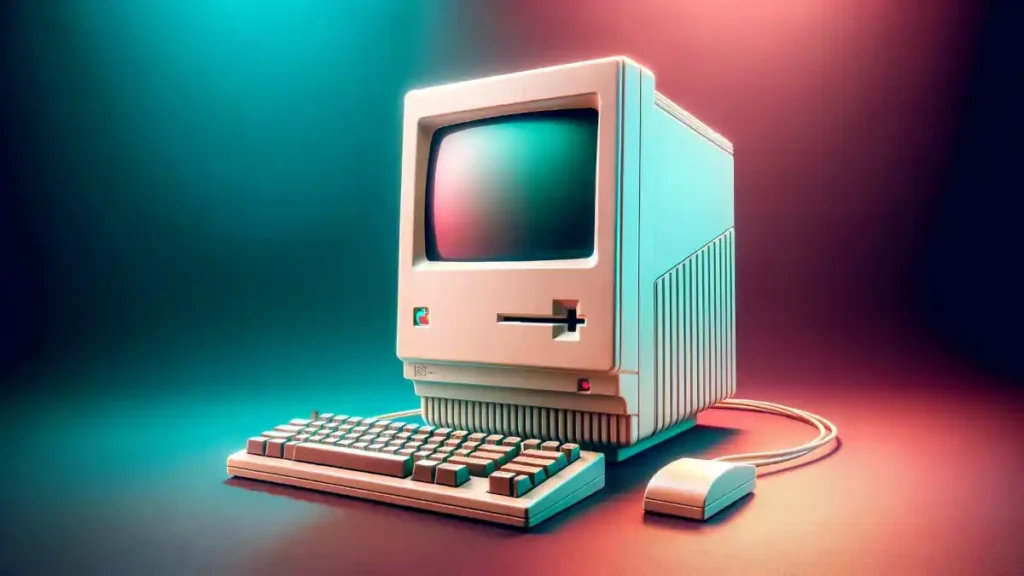
1. The Dawn of Macintosh
The Vision of Steve Jobs and Apple
In the late 1970s and early 1980s, personal computing was in its infancy, and Steve Jobs, the co-founder of Apple, envisioned something revolutionary. He dreamt of a computer that was not just for the technically adept but one that would be accessible and appealing to everyday people. Jobs imagined a machine that would be intuitive, user-friendly, and aesthetically pleasing—a radical departure from the daunting, text-heavy computers of that era. This vision was the genesis of the Macintosh. Jobs, with his indomitable spirit and unwavering belief in user-centered design, led a team of passionate and innovative minds at Apple to bring this vision to life.
Development and Launch of the Original Macintosh
The development of the Macintosh was a journey filled with challenges, breakthroughs, and sheer determination. In a secret lab at Apple’s Cupertino headquarters, a small team of engineers and designers, under Jobs’ guidance, worked tirelessly. Their goal was to create a computer that was not only powerful but also affordable and easy to use.

On January 24, 1984, the world witnessed the unveiling of the Macintosh. The launch event was nothing short of theatrical—a testament to Jobs’ flair for the dramatic. The Macintosh was introduced with a groundbreaking advertisement during the Super Bowl, signaling the arrival of a new era in personal computing. The launch was met with awe and excitement; the Macintosh was not just a product—it was a declaration of a technological revolution.
2. Technical Innovations and Features
Breakthroughs in User Interface
The Macintosh set a new standard for user interfaces in personal computers. It was one of the first to use a graphical user interface (GUI) and a mouse, making computing visually intuitive and interactive.
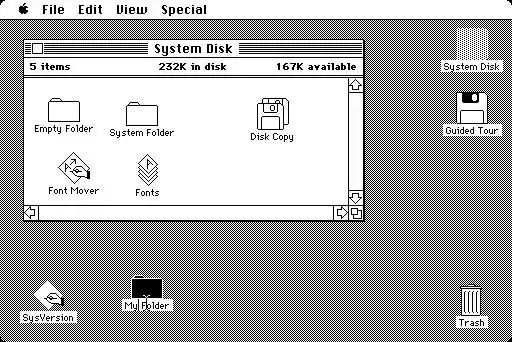
Users could now navigate by visually moving the mouse pointer and clicking on icons, menus, and windows, a stark contrast to typing commands on a command-line interface. This GUI was a game-changer, making computers approachable and usable for the general public.
Hardware Specifications of the First Model
The original Macintosh, officially named the Macintosh 128K for its 128 kilobytes of memory, was powered by a Motorola 68000 microprocessor running at 8 MHz. It featured a 9-inch monochrome display with a 512 x 342 pixel resolution, offering crisp and clear images for that time. The Macintosh included a 3.5-inch floppy disk drive, a novel addition that offered a more practical and portable solution for data storage compared to the then-standard 5.25-inch disks. Its compact, all-in-one design was also a significant departure from the bulkier computers of that era.
Software Ecosystem and Applications
The Macintosh launched with a suite of software designed to showcase its capabilities and ease of use. MacWrite and MacPaint were two of the standout applications, demonstrating the Macintosh’s graphics and word-processing prowess.
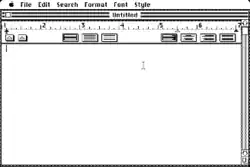
These applications were not mere tools; they were a statement about the Macintosh’s potential to enhance creativity and productivity. The software ecosystem that began with these applications laid the foundation for a wide range of software innovations that would continue to grow in the years to come.
3. Impact on Personal Computing
How Macintosh Changed User Interaction
The introduction of the Macintosh marked a paradigm shift in how users interacted with computers. Before its advent, computing required a steep learning curve, with a reliance on text-based commands and a lack of visual feedback. The Macintosh, with its Graphical User Interface (GUI) and mouse, brought a new level of intuitiveness to computing. For the first time, users could interact with their computers through graphical icons and windows, a concept that was almost unheard of at the time. This innovation made computers accessible to a broader audience, extending beyond professionals and hobbyists to everyday users, and paved the way for the widespread adoption of personal computers.
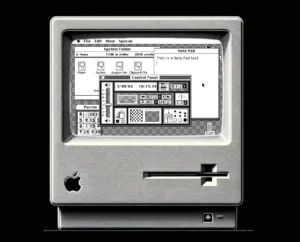
Macintosh’s Influence on Future Computers and Operating Systems
The Macintosh’s impact extended well beyond its immediate user base. It set a new industry standard for user interfaces. The idea of a GUI, popularized by the Macintosh, was adopted and further developed by other companies, notably Microsoft with its Windows operating system. The Macintosh’s emphasis on design and user experience also influenced how future computers were built and marketed. It established that computers could be both functional and aesthetically pleasing, changing the public’s perception of technology from purely utilitarian to something that could also be creatively empowering.
4. Statistical Overview and Milestones
Sales and Market Reception Over the Years
The Macintosh initially faced challenges in the market due to its high price and limited software availability. However, it gradually gained traction as more applications were developed and as Apple introduced more affordable models. The introduction of the Macintosh II in 1987 and the PowerBook in 1991 marked significant boosts in sales, expanding the Macintosh’s appeal to business users and professionals. The iMac, introduced in 1998, was a turning point, selling approximately 800,000 units in its first five months. This success symbolized a resurgence for Apple and reestablished the Macintosh as a significant player in the personal computing market.
Key Models and Their Successes
- Macintosh 128K (1984): Despite its groundbreaking approach, its sales were modest due to its high price and limited software.
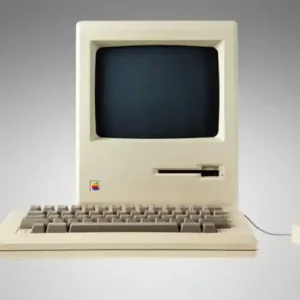
- Macintosh II (1987): Introduced color graphics and expandability, appealing to businesses and creative professionals.
- PowerBook (1991): Revolutionized the laptop market with its ergonomic design and portability.
- iMac (1998): With its striking design and internet capabilities, the iMac played a key role in Apple’s revival, selling millions of units and bringing the Macintosh back into the spotlight.
- MacBook Air and MacBook Pro: Continuously evolving, these models have been at the forefront of laptop innovation, balancing power, aesthetics, and functionality, and maintaining the Macintosh’s reputation for cutting-edge design and user experience.
The journey of the Macintosh is a testament to innovation, resilience, and the power of vision in the realm of technology. Its influence on personal computing is indelible, and its evolution continues to shape the industry.
5. Challenges and Criticisms
Early Limitations and Market Struggles
Imagine the early days of the Macintosh as a journey filled with hurdles and high expectations. When the Macintosh was first introduced, it was lauded for its innovative approach, but it also faced significant challenges. One of the most prominent issues was its price. For many potential buyers, the Macintosh was simply too expensive, making it a less viable option compared to more affordable PCs on the market. Additionally, the Macintosh’s closed architecture and lack of compatible software limited its appeal to a broader audience. These early limitations led to struggles in the market, casting doubts on the Macintosh’s future.
Despite these challenges, there was a sense of unwavering commitment within Apple. The team behind the Macintosh believed deeply in the computer’s potential and continued to push forward, working tirelessly to address these issues.
Competition and Apple’s Strategic Responses
As the personal computing market evolved, the competition intensified, particularly with the rise of Microsoft’s Windows operating system. Windows began to dominate the PC market, offering a similar graphical user interface experience at a more affordable price and with more software options. This competition put Apple and the Macintosh in a precarious position.
In response, Apple made strategic moves to revitalize the Macintosh. One significant change was the transition to a more open approach. Apple began to expand the Macintosh’s capabilities, making it more compatible with other software and hardware. This shift helped the Macintosh gain a stronger foothold in certain sectors, particularly among creative professionals.
Another pivotal response from Apple was innovation. Consistently, the company continued to push the boundaries of what the Macintosh could be. This approach was particularly evident with the launch of the iMac in 1998, which not only boasted a unique, all-in-one design but also marked a renewed focus on ease of use and internet capabilities. Significantly, the iMac’s success became a turning point, effectively helping to reestablish the Macintosh as a key player in the personal computing market.
Moreover, through these challenges and strategic responses, the Macintosh story emerges as one of resilience and adaptation. It aptly reflects Apple’s ability to navigate a rapidly changing technology landscape, continuously reinventing the Macintosh to stay relevant and competitive. Consequently, this narrative of overcoming obstacles and responding strategically to competition underscores the Macintosh’s enduring legacy in the world of personal computing.
6. Legacy and Evolution
The Macintosh Line: From 1984 to the Present
The journey of the Macintosh line is a captivating story of innovation and transformation. Starting in 1984 with the original Macintosh 128K, Apple set the stage for a new era in personal computing. The 1980s and early 1990s saw the expansion of the Macintosh family with models like the Macintosh Plus and the Macintosh II, which introduced color displays and more powerful processors.
In the mid-1990s, Apple faced challenges, but the introduction of the iMac in 1998 marked a turnaround. The iMac, with its striking design and internet capabilities, reignited interest in the Macintosh line. The early 2000s brought the MacBook and iMac G4, pushing the boundaries of portable and desktop computing.
The transition to Intel processors in 2006 was a significant milestone, enhancing the Macintosh’s performance and compatibility. This move paved the way for the sleek MacBook Air, the powerful MacBook Pro, and the all-in-one iMac, which continued to define the cutting edge of design and functionality.
Today, the Macintosh line, including the latest M1 chip-based models, stands as a testament to Apple’s commitment to innovation, blending high performance with Apple’s signature aesthetic.
The Enduring Influence of Macintosh in Modern Apple Products
The spirit of the original Macintosh enduringly lives on in modern Apple products. Notably, the emphasis on intuitive design, user-friendly interfaces, and sleek aesthetics – all quintessential hallmarks of the original Macintosh – are prominently evident in today’s Apple products. Furthermore, from iPhones to iPads, the foundational principles initially introduced by the Macintosh persistently continue to guide Apple’s approach to product design and functionality, consequently influencing the tech industry at large.
7. Conclusion
From its groundbreaking debut in 1984 to its current state-of-the-art incarnations, the Macintosh line has been more than just a series of computers; indeed, it has been a beacon of innovation in personal computing. Significantly, its journey mirrors the evolution of technology itself – adaptive, forward-thinking, and consistently pushing the boundaries of what’s possible. Furthermore, the Macintosh’s legacy is not just in the machines that bear its name but also in the broader influence it has had on technology, setting a standard for user-centric design and functionality that continues to inspire and shape the industry.
8. References
- Apple’s WebSite
- “Revolution in The Valley” by Andy Hertzfeld: Chronicles the development of the original Macintosh by one of its key developers.
- “Insanely Great: The Life and Times of Macintosh” by Steven Levy: Provides an insightful overview of the Macintosh’s impact on personal computing.
- “Global revenue of Apple from 2004 to 2023“, Statista.com